Many cyclists don’t like riding in the rain, because it can be uncomfortable and you can feel more vulnerable when it’s wet.
But cycling in the rain doesn’t have to be an ordeal – and can even be enjoyable – if you have the right clothing, your bike is ready for wet-weather riding and you adapt your riding style to the conditions.
Here, we’ll spell out everything you need to know about how to stay safe and comfortable when riding your bike in wet conditions and give you 15 tips for the best experience when cycling in the rain.
1. Invest in the right clothing
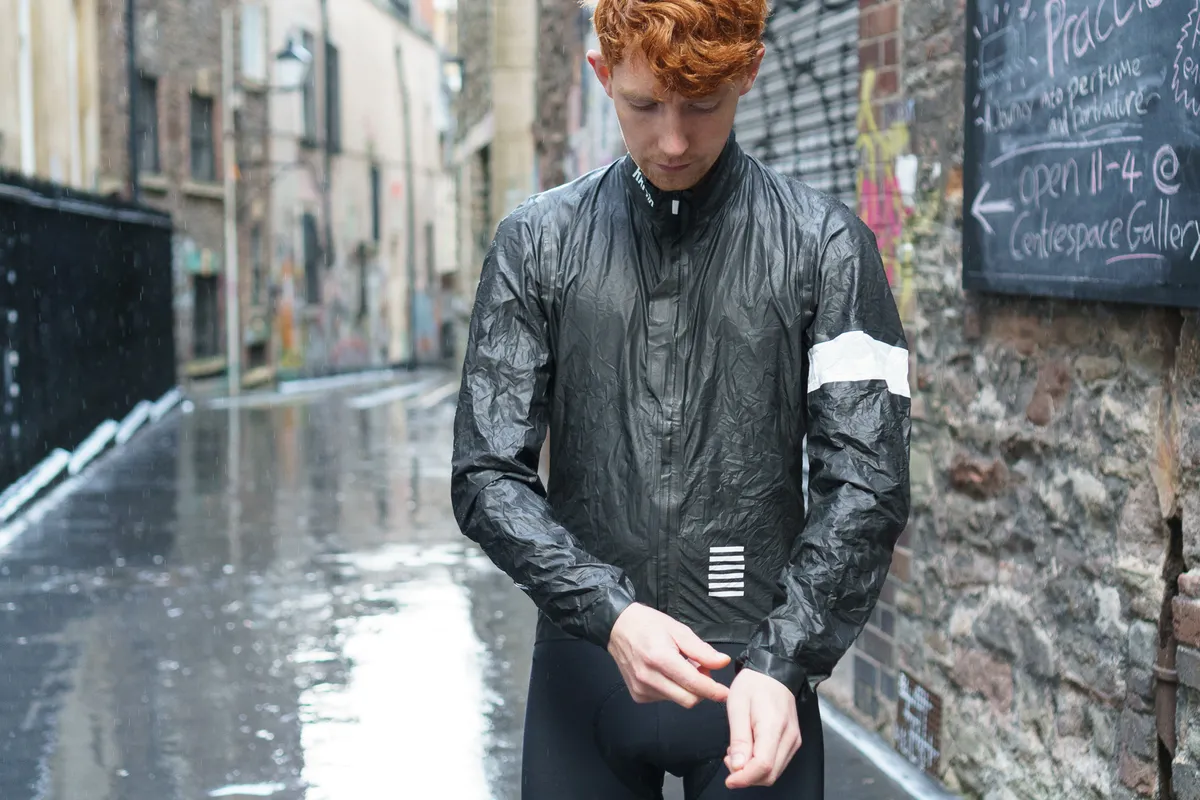
Getting the right clothing for cycling in the rain is the first step to staying comfortable in wet weather.
It’s made tricky by your work rate as you ride, which can result in uncomfortable ‘boil in the bag’ riding in some options, as you build up a sweat, which condenses on the inside of your kit.
It’s particularly a problem for top-half clothing, so it’s worth investing in a cycling rain jacket.
Although the best waterproof jackets made from fabrics such as Gore-Tex and eVent are expensive, they use the most advanced fabrics and have the highest breathability ratings. Less advanced, less expensive options exist that can work almost as well though.
To ensure that water stays out, look for garments that have taped seams.
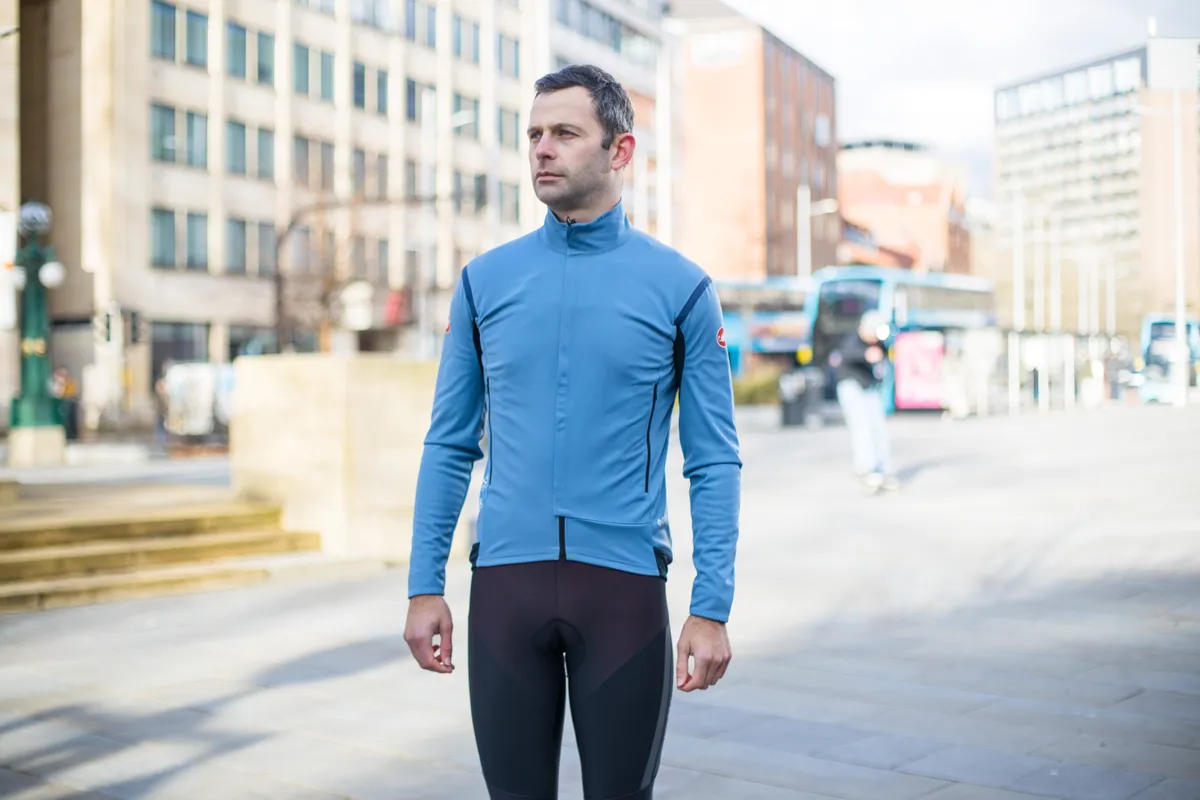
A technical baselayer will stay warm even if you get wet. Avoid cotton, which gets cold when wet.
If it’s warm and wet, layering is less of an issue. You may be more comfortable just wearing a jersey and getting wet, rather than getting sweaty in a rain jacket.
Wet-weather jerseys, of which the Castelli Gabba was the archetype, provide less water resistance than rain jackets but are more comfortable if you’re riding hard.
Bottom-half clothing may include waterproof overtrousers, although many cyclists prefer water-resistant bib tights. Although they’ll keep the rain off less well, bib tights are more comfortable to ride in.
For really foul weather, a waterproof onesie may be the business, particularly if you're mountain biking.
2. Wear overshoes
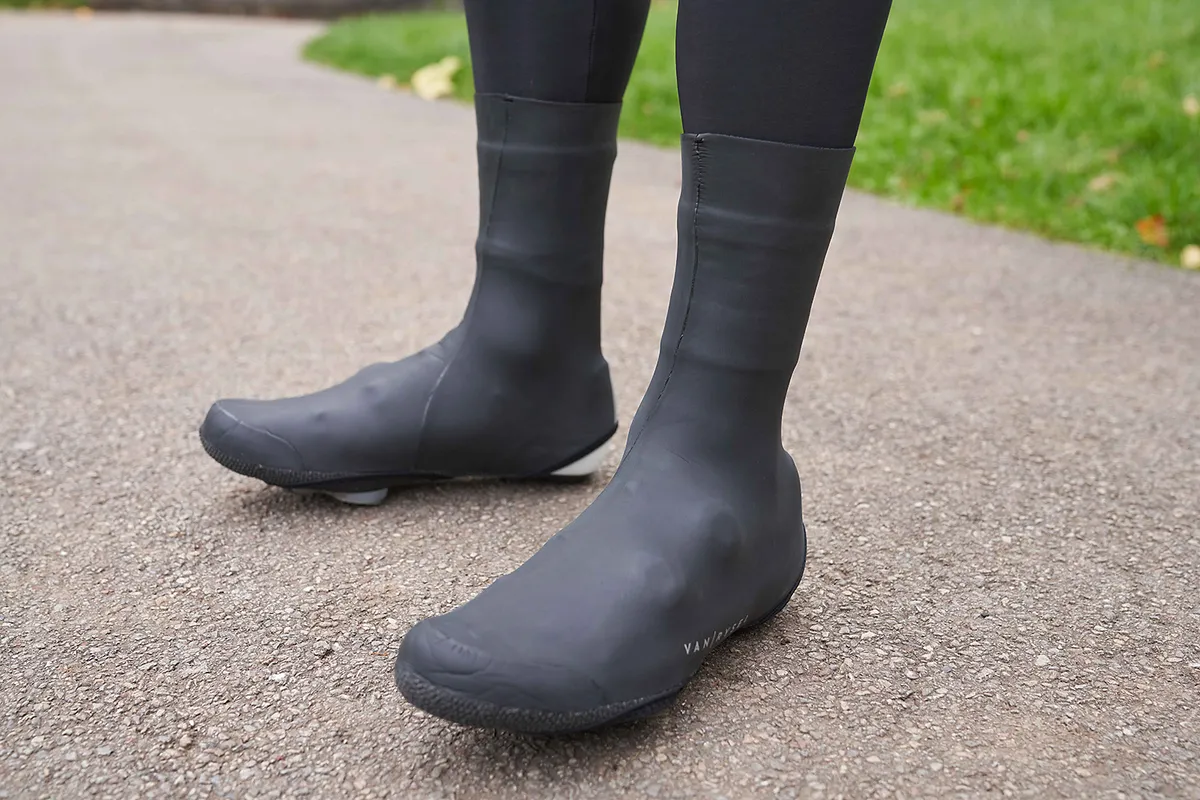
Waterproof overshoes will help keep your feet dry for longer when cycling in the rain.
Even when wet does get in, overshoes should help keep your feet warmer. They’ll hold the warm water next to your feet and provide a windproof outlet layer. Plastic bags over your socks will help keep your feet drier for longer as a last resort.
Overshoes tend to wear out quite quickly, so if you want a more robust footwear solution, consider investing in a pair of winter cycling shoes or boots. These will have a fully enclosed sole unit and a waterproof upper, so the only way for your feet to get wet is for water to trickle down through the ankle cuff.
3. Wear gloves
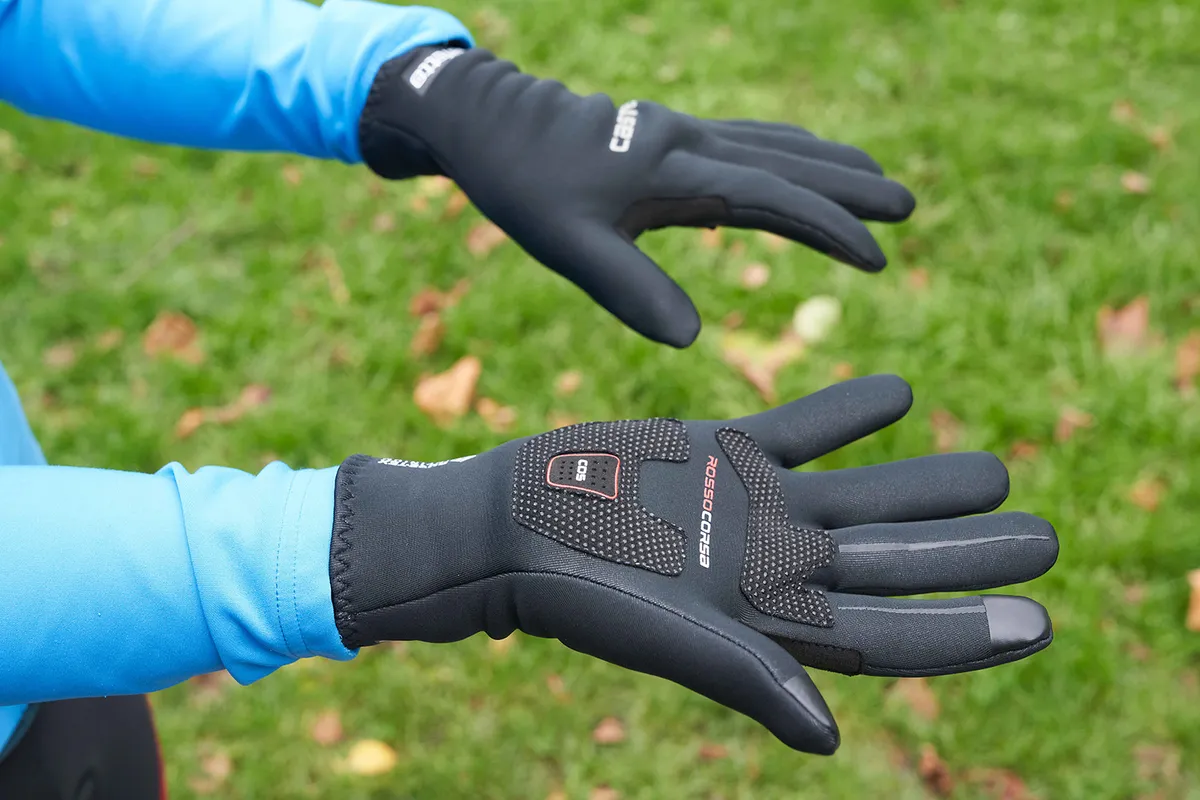
It’s a good idea to wear full-finger gloves in the rain.
Gloves will help you grip a wet handlebar and stop your hands from getting numb if it's cold and wet.
As with other clothing, modern winter cycling gloves employ a range of technical fabrics.
They usually have a palm with silicone grippers for a sturdier grip on the handlebars, a breathable waterproof upper surface and well-placed insulation to keep your hands warm without impacting your grip.
4. Wear glasses
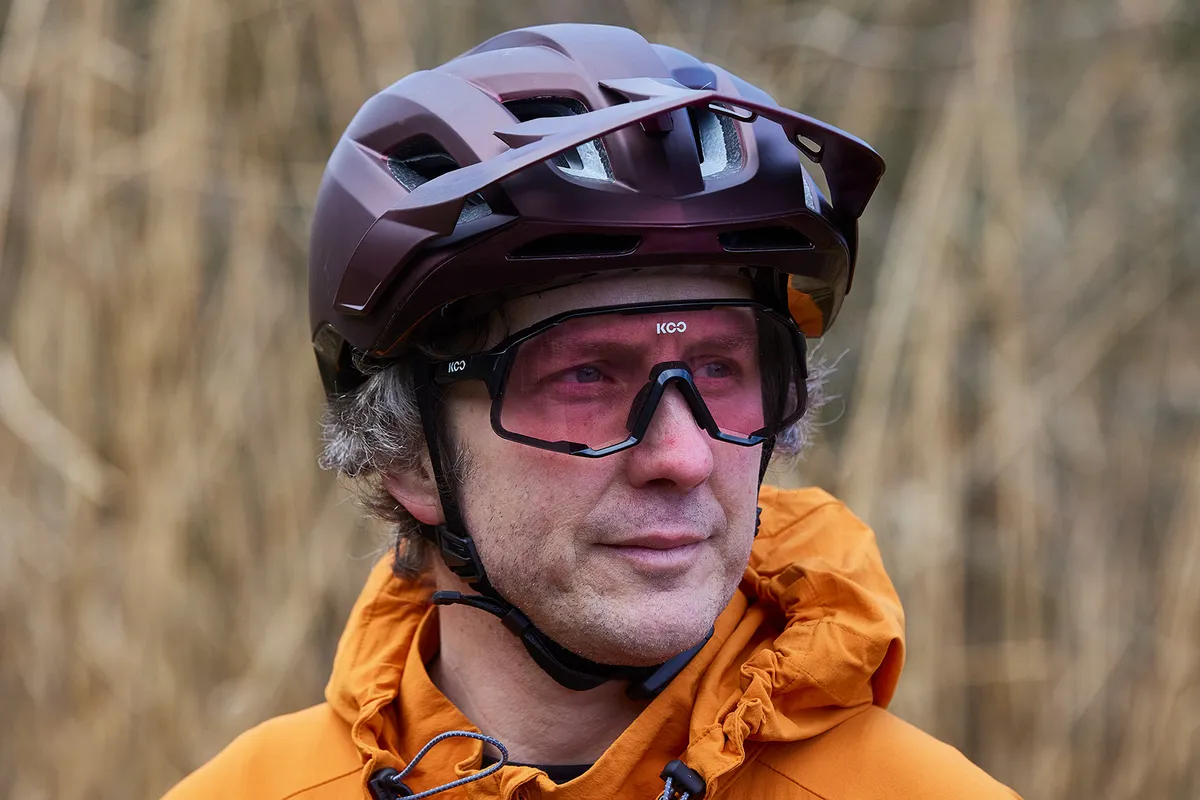
Rain spraying on your face is uncomfortable and may reduce your vision. Spray from the road can wash grit into your eyes as well. So, wearing a pair of cycling glasses can help protect your eyes.
Many of the best cycling glasses enable you to select a clear lens, either as an optional extra or as part of a multi-lens set. Photochromatic glasses are also handy when riding in wet conditions because they will adapt to the light level.
Most cycling glasses have a hydrophobic coating on the outside of the lens to help repel water and keep them clear.
5. Wear a cap

You’ll stay more comfortable in the rain if you wear a cycling cap. Most have a peak, which will help keep water out of your eyes.
A standard cotton cap will do the job, although it will soak up water, get wet and may feel cold and clammy. There are more sophisticated options that will be more comfortable though, made either from thin fleece-type material or a breathable waterproof fabric.
6. Fit mudguards to your bike
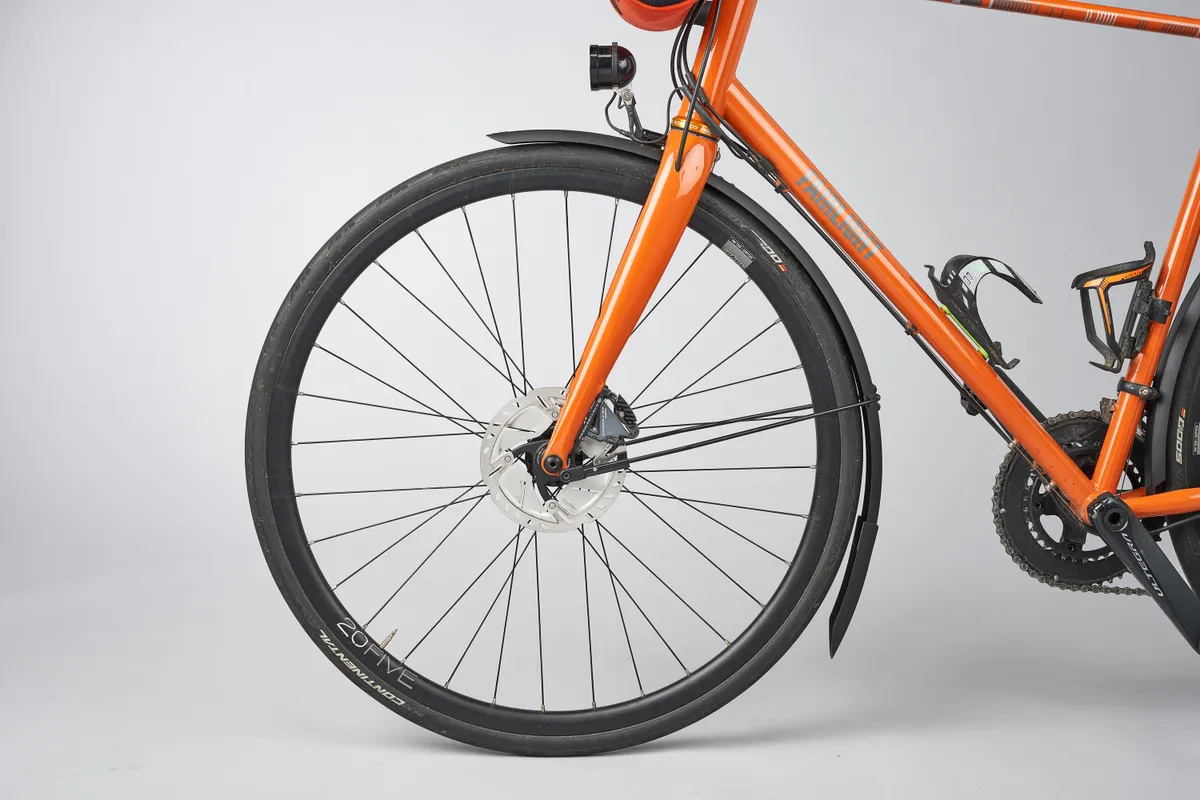
The number one item that will make riding in the rain more comfortable is a set of mudguards.
Full-cover mudguards are the ideal solution, keeping road spray off most of you and your bike.
Many modern road bikes and gravel bikes have the bolt bosses necessary to fit mudguards, but clip-on mudguards are a reasonable alternative.
There are specific mountain bike mudguards and gravel bike mudguards, which tend to provide less coverage than full-length fenders but will still do a good job of protecting you from rain and mud.
7. Use lights
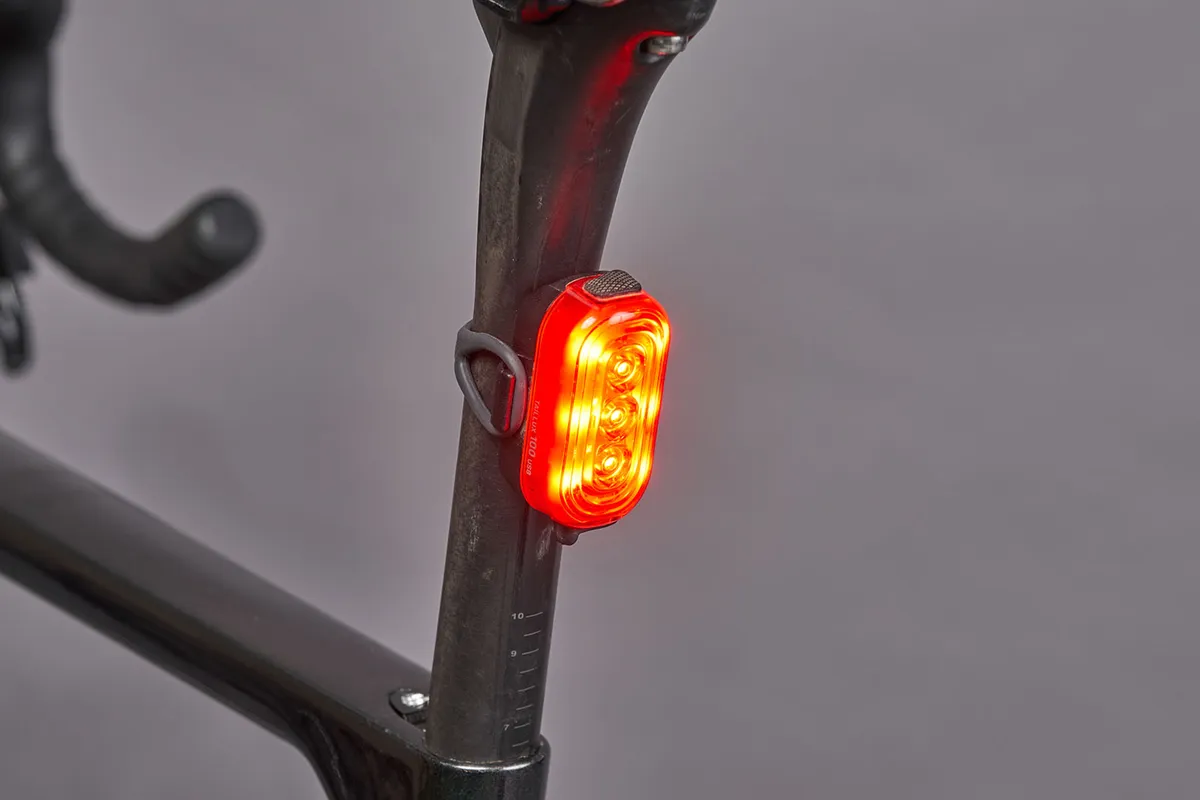
Wet weather can reduce your visibility to other road users, not just because of cloud cover and lower ambient light, but also because visibility out of vehicle windows may be impaired by the rain.
It’s important to use bike lights, even during the day, to increase your road presence. Use a flashing mode at the front and rear if you don’t need your front light to see by, because this should increase other road users’ awareness.
Rearview radar lights can be particularly good during wet weather because they will notify you of traffic approaching from behind.
8. Check your tyres and tyre pressures
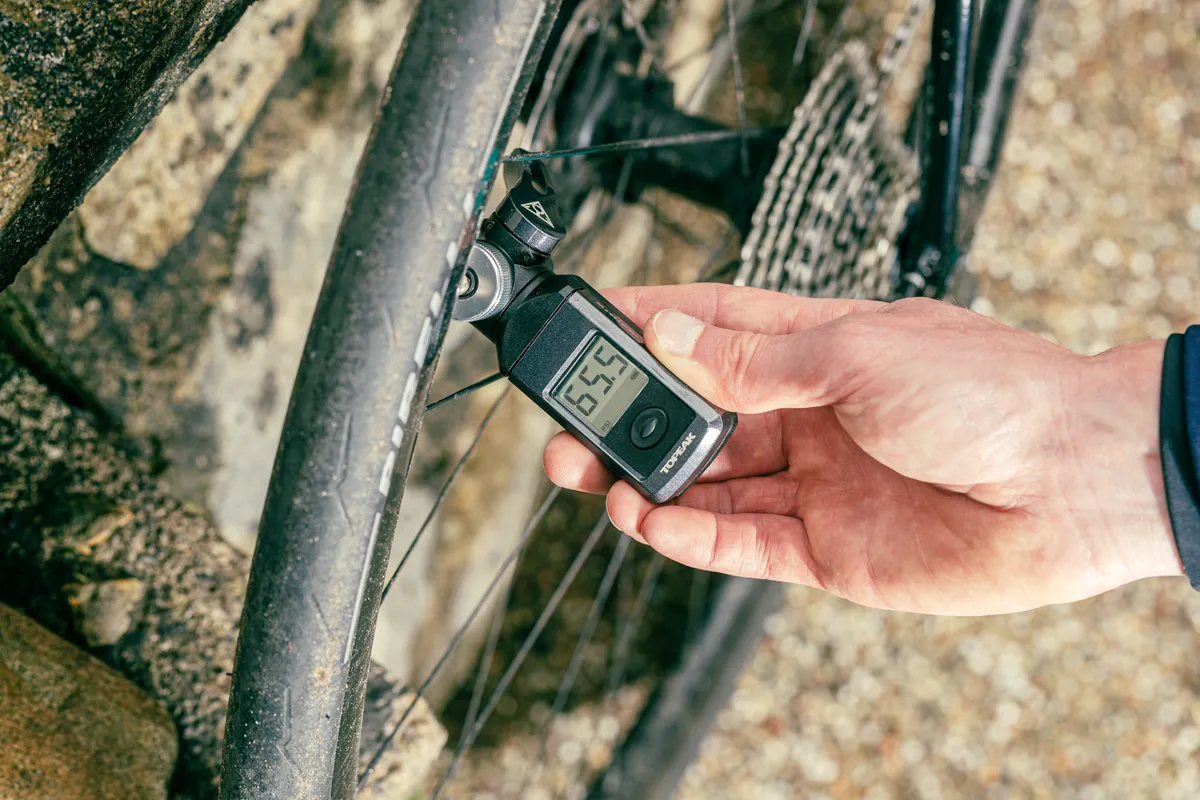
Unlike car tyres, cycle tyres are not prone to aquaplaning because of their narrower widths, so it’s not necessary to have a tread on your tyre when riding on tarmac.
You’ll need a tread for grip if you’re riding on loose, muddy surfaces in the wet.
It’s a good idea to reduce your tyre pressure a little when riding wet roads because this will increase the size of the contact patch and the grip on offer.
Make sure your tyres aren’t worn down, because the extra debris on the road when it rains means you’re more likely to get a puncture.
9. Use the right chain lube
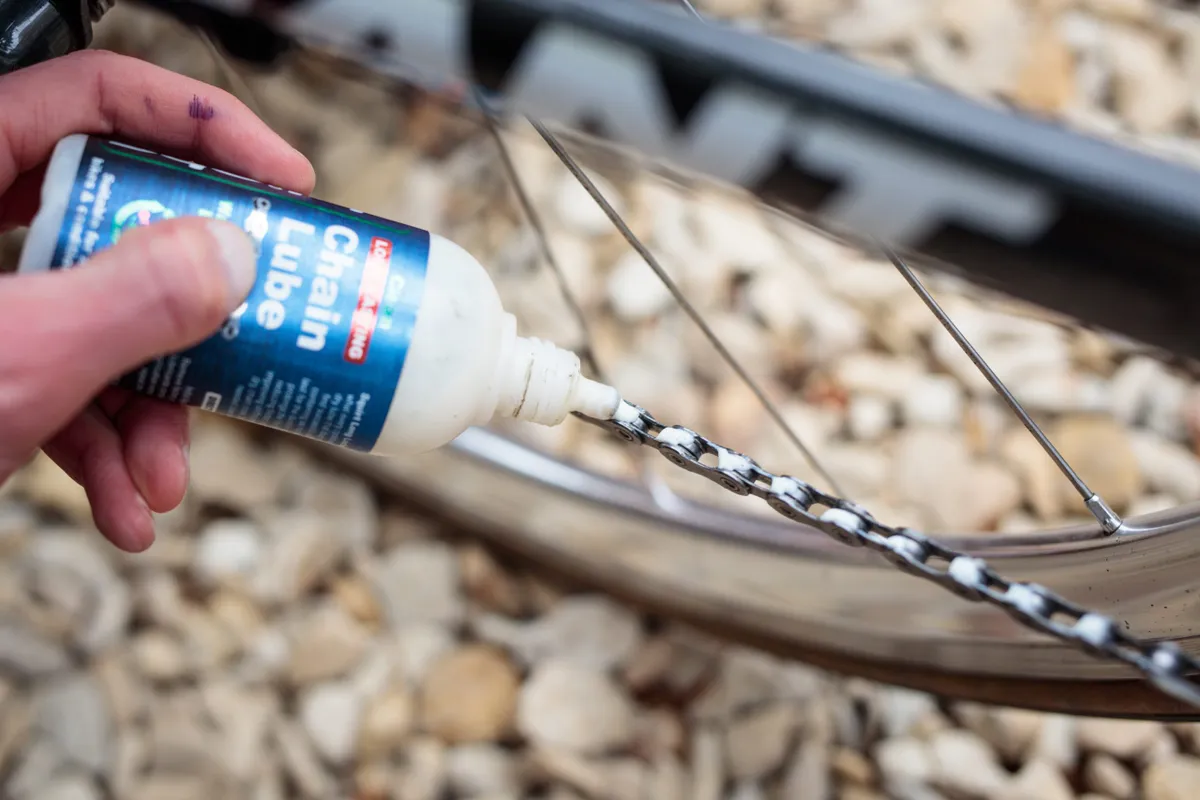
Use the right chain lube to avoid your drivetrain becoming exposed.
Your chain will be jet-washed by wheel spray as you ride in wet conditions. This can rapidly remove a dry lube.
A suitable wet lube will stay on your chain and protect it better if you are riding in the rain.
The downside is wet lubes tend to attract dirt, so you may need to clean your chain more often than if using a dry lube.
10. Keep your bike clean
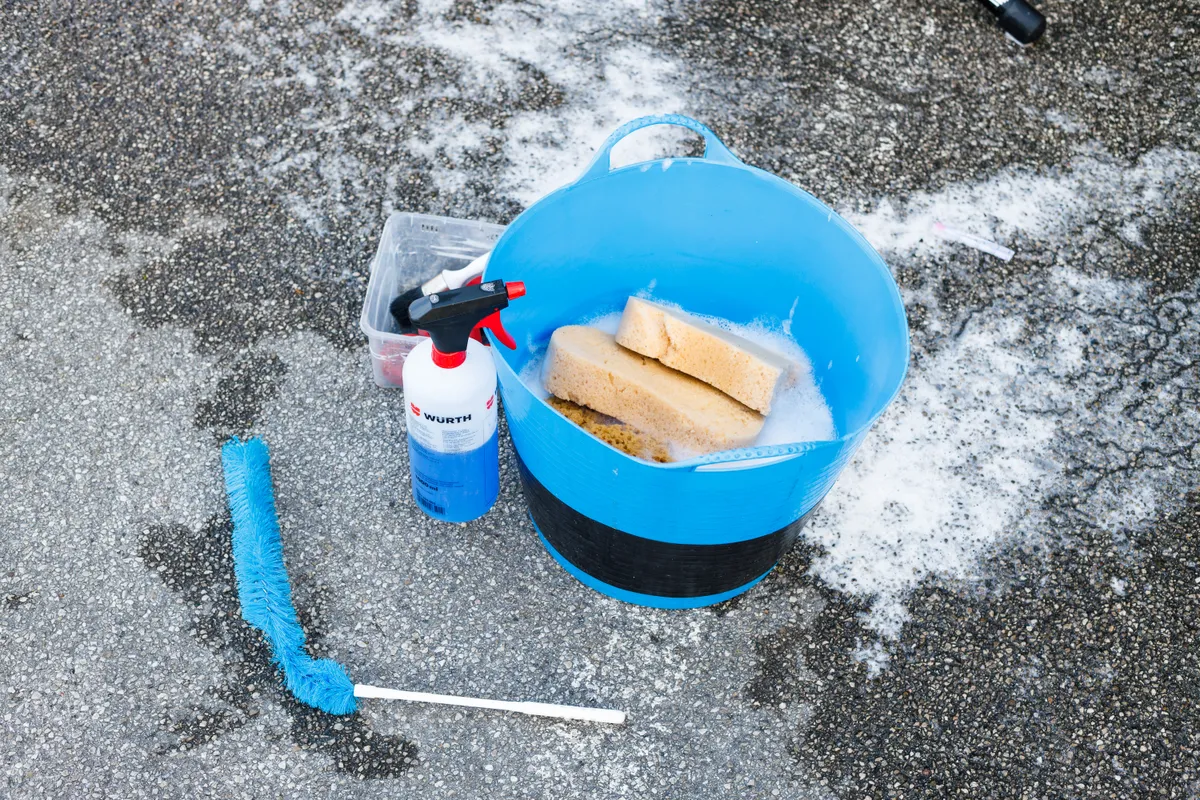
Just like your chain, your whole bike will work more effectively if it’s kept clean, so give it a good wash when you’re back from a wet or muddy ride.
Bearings don’t like wet weather, so dry them and spray them with a water-displacing product such as WD40. The main areas to pay attention to are hubs, headsets and bottom brackets.
Any steel or chromed parts on your bike are also prone to rusting, so dry them off.
11. Keep your clothing clean as well
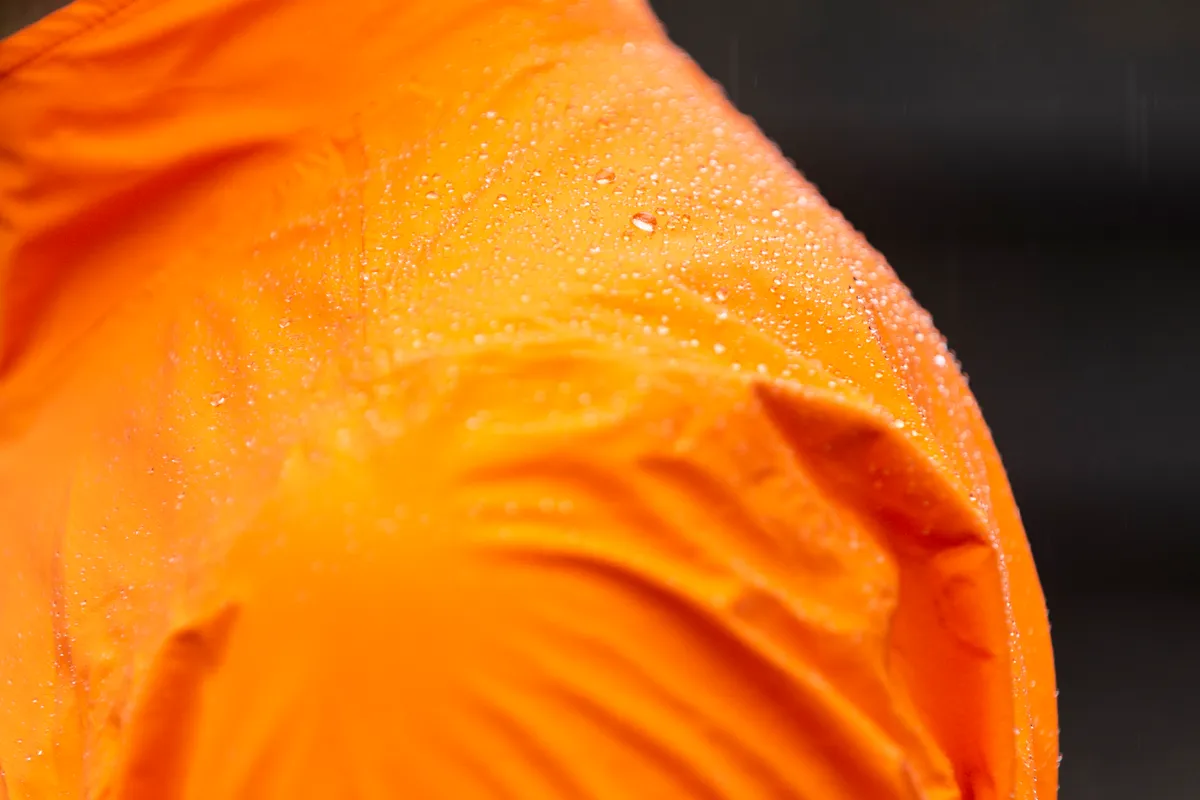
As well as your bike, it’s important to keep your clothing clean for it to be effective in the rain.
The breathable membrane in fabrics such as Gore-Tex needs to be kept free of oils, which you produce as you sweat, as well as picking up from the road, for it to be effective.
The surface of rainwear is typically treated with a durable water-repellent (DWR) product to repel water.
It’s worth reproofing your waterproof cycling gear to keep it feeling as good as new.
12. Avoid riding through puddles

It goes without saying that you’ll stay drier if you try to avoid riding through standing water. Don’t be intimidated into riding right at the side of the road.
As a cyclist, under the Highway Code you have the right to use the whole of your lane, so if there’s a large puddle ahead, signal and move towards the centre of the lane to avoid it as much as possible.
It’s not just water in puddles that’s a danger. Often, they’ll accumulate mud and grit, so you risk skidding or a puncture.
A puddle may disguise a pothole with an abrupt edge. Hit this and you may get a pinch flat, damage your wheels or even be thrown from your bike.
13. Avoid riding over ironware
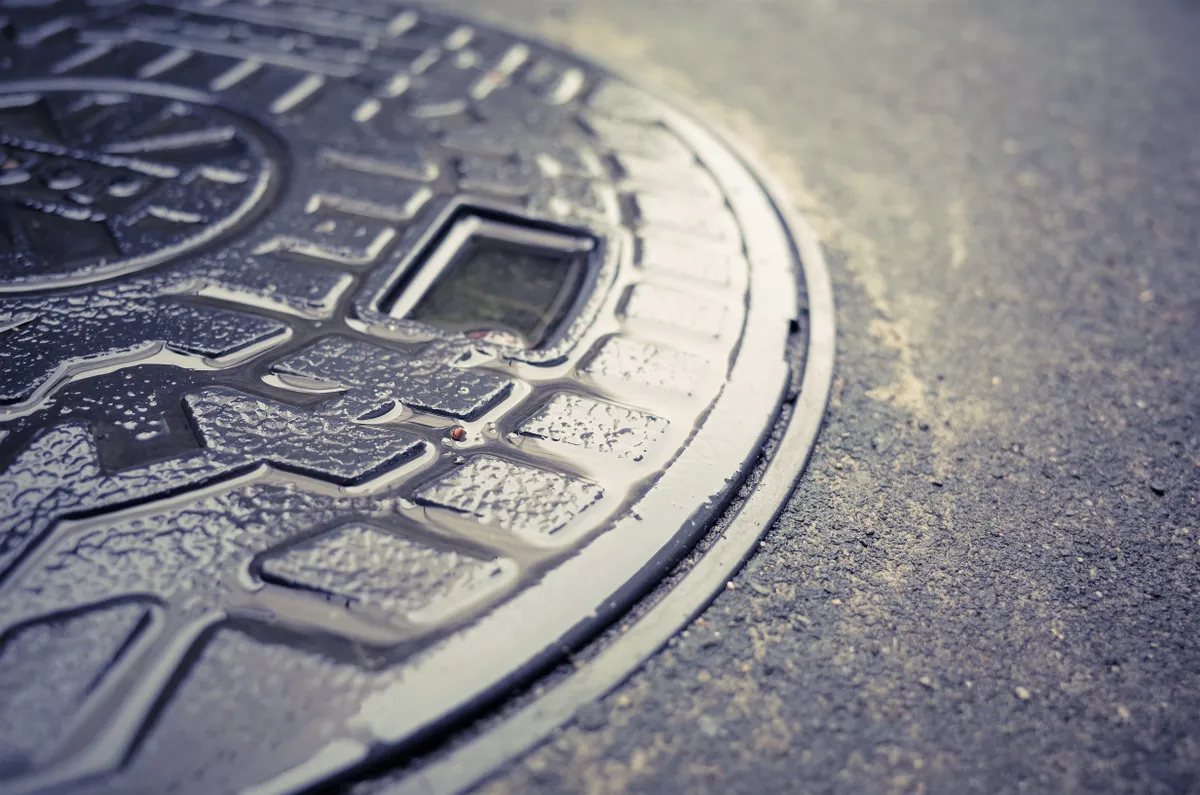
It’s important to avoid ironware on the road.
Tyre grip on metal surfaces is significantly lower than on tarmac. Manhole covers are the main obstacle, but drains too can be slippery. Cattle grids are another obstacle to be taken carefully when wet.
If you do have to ride over a metal road feature, control your speed beforehand and don’t try to brake or turn as you pass over it to lower your risk of skidding.
14. Brake carefully
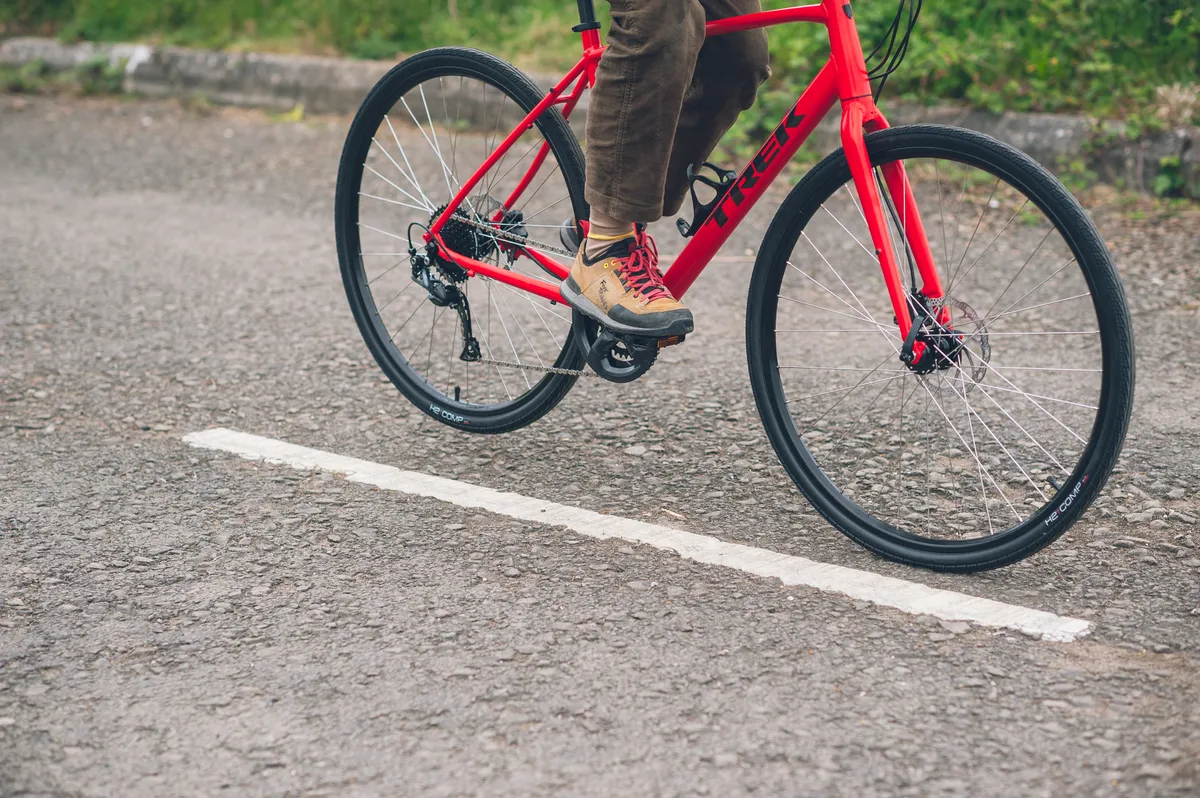
Use your brakes judiciously in the rain. Stopping distances increase in wet conditions, so anticipate when you’ll need to brake and start braking earlier than you would in the dry.
This is particularly true of rim brake bikes, but it applies to bikes with disc brakes too.
In the wet, rim brakes have to cut through the film of water on your wheel rim before they start to bite, which can lead to a worrying delay before any braking happens. Disc brakes are better in this respect, but not immune to the problem.
Once your brakes start to work, they can lock up your wheel. Since adhesion between your tyre and the road surface is less in the wet, this can cause a skid.
Be particularly careful when cornering. Try to get all your braking done before you begin to turn, enabling your bike to freewheel through the corner.
When you get home, check your brakes for wear, because riding in the rain can increase the rate at which brake pads wear down. Also check wheel rims on rim brake bikes, because they can wear quickly in wet conditions.
15. Protect items you’re carrying
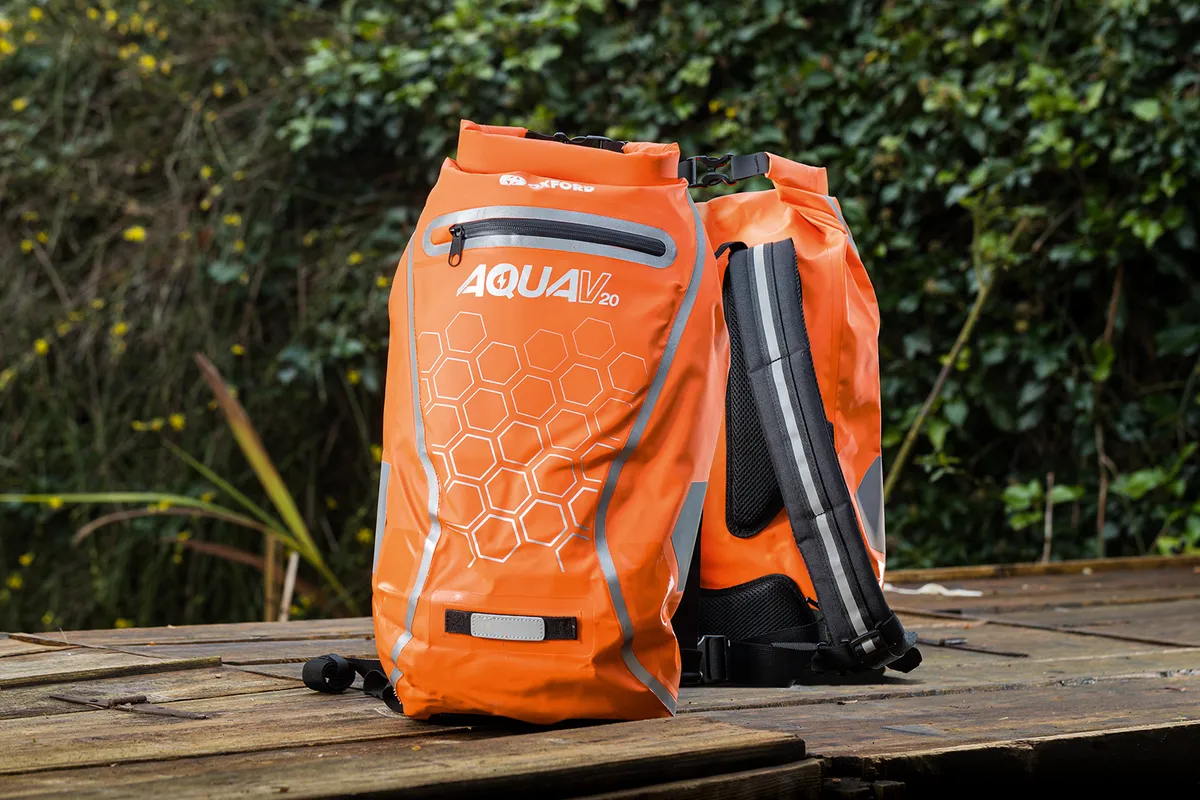
If you’re carrying any items with you, whether on a commute or a leisure ride, they need to be kept dry too.
Many bike bags and cycling backpacks are made with waterproof materials, and include taped seams and a roll top to keep out water. Nevertheless, you may want to pack anything sensitive in a dry bag or sleeve inside.
Some saddle packs are not as well protected though and their contents may get wet. Multi-tools can rust, so if they’ve been on a wet ride, take them out of a saddle bag and dry them out.
Finally, don’t sit around in wet clothing. Get changed into something dry as soon as you can and sit back, pleased at having conquered the rain.
